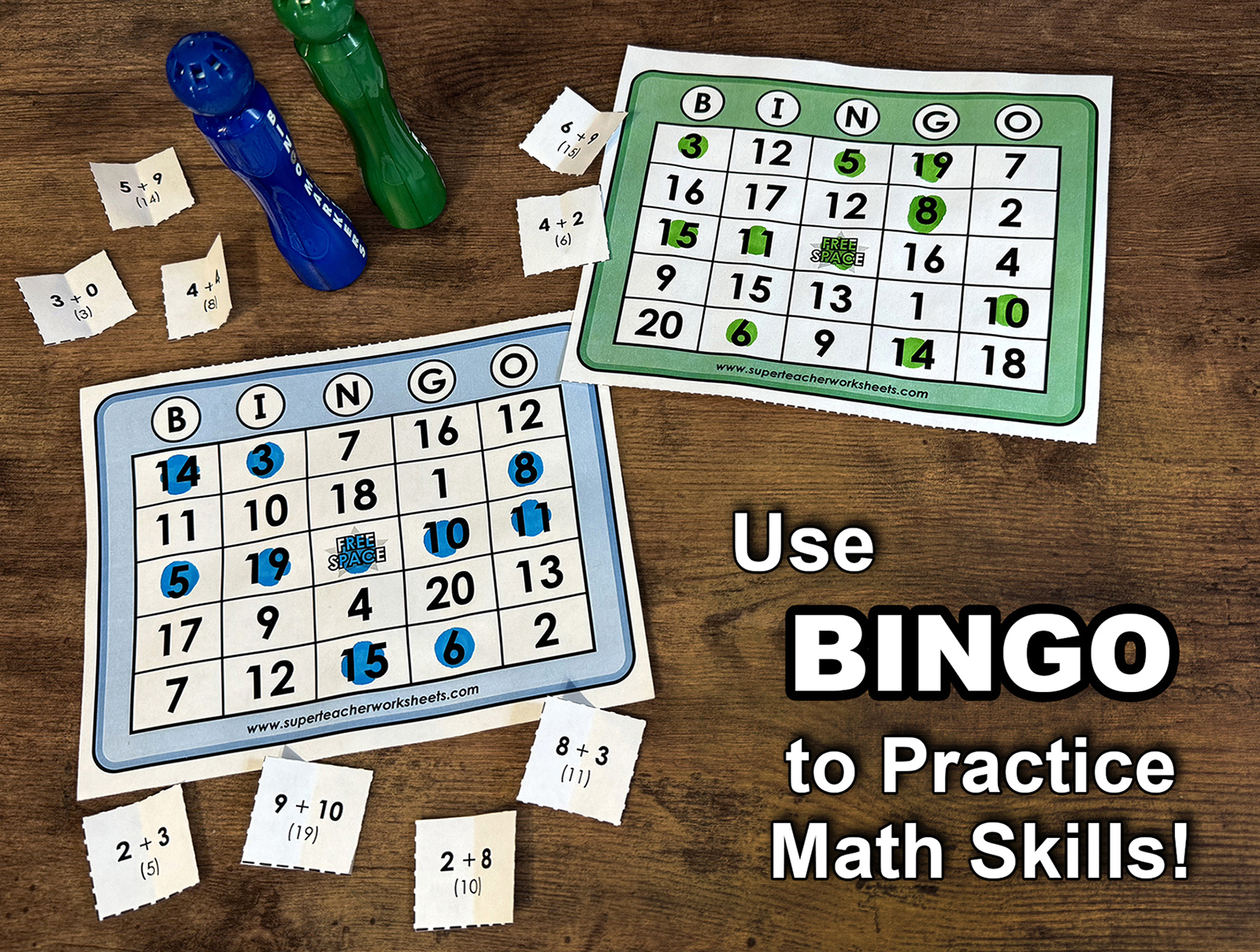
Looking for a versatile activity that works for every age group? Look no further than math bingo! Math bingo adds the excitement of a game and the engagement of a hands-on activity to your review time. Whether your learners are just starting to identify numbers, working on division, or are already solving algebraic equations, it’s the perfect way to make math practice fun.
Materials:
bingo boards
calling cards
a bowl or bag to hold the calling cards
bingo markers (such as math counters, bingo dabbers, pennies, beans, etc.)
For our example, we’re using the Addition Bingo game from Super Teacher Worksheets. It includes premade calling cards, bingo boards, and instructions all in one file.
Step 1: Skill Warm-up
Don’t just jump into the game! Before starting, have a quick review session. Try out some practice facts. Make sure everyone has their math thinking caps on.
Step 2: Prepare and Distribute Materials
If you haven’t already, make sure all the calling cards have been cut out. Fold them and place them in a bowl or bag.
Pass out bingo boards and bingo markers or dabbers to each player. We recommend 15–20 markers each if you’re using objects. (Now’s a good time to remind players that markers are for playing bingo, not catch!)
Step 3: Explain the Rules
Whether this is the first or the hundredth time you’ve played, it’s important to go over rules and expectations!
Using one of the calling cards, go through a practice round. For addition bingo, explain that when you call out an addition fact such as “4 + 4,” players get to put a marker on an 8 if they have one on their board. Students should only mark one square at a time. If there are two 8s on a board, they’ll choose one to mark when “4 + 4” is called. Later in the game, the caller might say “6 + 2,” and that’s when they can mark another 8. Repeat numbers are more likely to come up in games with simpler math skills.
The first person to complete a straight line vertically, horizontally, or diagonally gets to shout “BINGO!” to win and end the game.
Step 4: Play!
Randomly select calling cards one at a time. Call out the fact, then allow enough time for players to solve the problem and place a marker. Then just repeat this step until you hear “BINGO!”
Here’s a tip: Write the facts on the board as you go. This is a great aid for visual learners, it helps prevent having to repeat yourself too many times, and it’s a great tool for checking the winner’s board.
Step 5: Win and Review
When a student calls bingo, verify their board. To up the stakes and engagement, consider giving the winner a small prize like a snack or sticker. If you play multiple rounds, consider making the winner the next card caller!
Wrap-up and material-collection time is also the perfect opportunity to discuss the larger applications of the skill being practiced. Why is addition useful? When else do we use it? What other addition facts can your students come up with on their own?
Variations
You can practice all sorts of math concepts with bingo. Are your learners just beginning their journey as mathematicians? Fill bingo boards with numerals and call out the number name (e.g., call “three” and they’ll put a marker on a 3). Are they working on equations? Each calling card can be an equation (like “2(x+1) = 10”), with the solution (4) as the bingo square! Use this generator to adapt the game into something that accommodates any math skill.